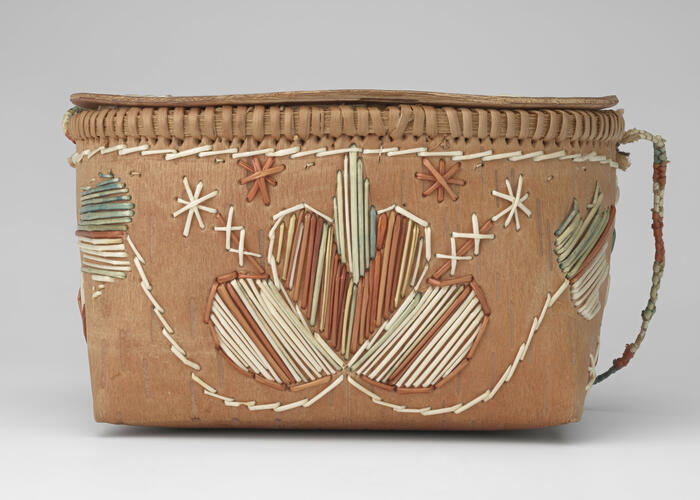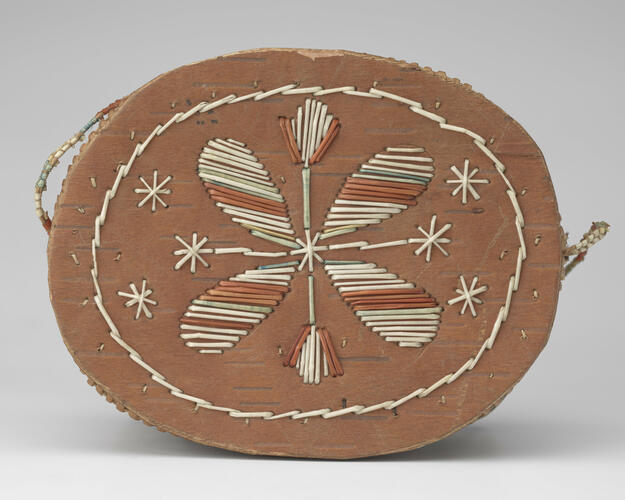Basket ( 1860
Birch bark, porcupine quills, sweet grass | 8.0 x 13.0 x 10.0 cm (whole object) | RCIN 84339
-
Birch-bark basket (makak) and lid, decorated with flower design with small stars on sides in quillwork, with quillwork handle; containing a handwritten paper label.
Inside the basket is a length of sweetgrass, one of the four sacred medicines used by the Michi Saagiig alongside sage, tobacco and cedar. It grows naturally across traditional First Nations territories. When braided, as here, it may be used for decoration. Sweetgrass is also burnt in sacred fires, sweat lodges and smudging ceremonies, where it acts as a spiritual purifier.
This basket is one of more than a dozen birchbark containers presented as gifts to Albert Edward, Prince of Wales (later King Edward VII) in September 1860 by Michi Saagiig women. The prince visited the community at Rice Lake Village (now Hiawatha First Nation), Ontario, during a landmark two-month tour of Canada – the first royal tour of these territories.
The baskets are known as ‘makaks’ in Anishnaabemowin, an Indigenous language spoken by the Mississauga First Nation community. Most are decorated with porcupine quillwork using a combination of Indigenous geometric and European-inspired floral designs. Unusually, the names of the women who made the makaks are preserved, on handwritten paper labels or quilled birchbark tags.
The meeting at Rice Lake was an important opportunity for community members to acknowledge and renew their special relationship with the Crown. Gimaa (Chief) Paudash made a speech expressing their identity as sovereign nations allied to the Crown – a bond which stretched back hundreds of years. The presentation of the makaks and other gifts signified the renewal of these allegiances and obligations.
After the prince’s return to Britain, the makaks were displayed in the Swiss Cottage Museum at Osborne House, Isle of Wight.
The maker of this makak, Catherine Muskratt (ca.1821-1892), was married to Moses Muskrat (c.1809-1879), a farmer who was considered a patriarch of the village (Drayton). Catherine was 39 in 1860. At the time of the 1861 census, she and Moses were living in a 1 1/2 storey log home with their four children ranging in age from 6 to 24. Biographical information supplied by Dr Laura Peers and Dr Lori Beavis
Provenance
Presented to Prince Albert Edward (future King Edward VII) at Rice Lake, August 1860
-
Creator(s)
(nationality)Acquirer(s)
-
Medium and techniques
Birch bark, porcupine quills, sweet grass
Measurements
8.0 x 13.0 x 10.0 cm (whole object)
Category
Place of Production
Rice Lake [Ontario]










